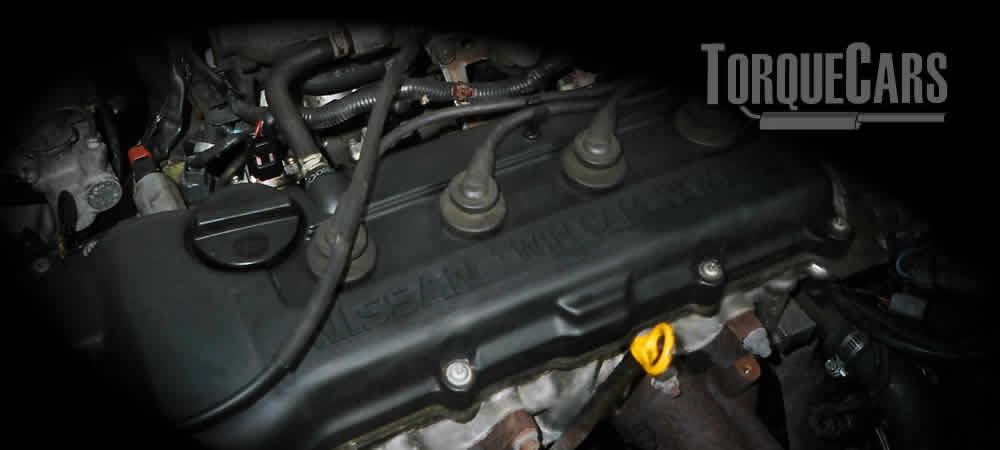Tuning the Nissan GA
"All you need to know about performance tuning the Nissan GA engine!"
Carref prides itself on providing the latest tips and guides to your modification project.
The Nissan GA offer good returns when tuned and with a few sensible motorsport upgrades like remapping, turbo kits and camshafts you will greatly enhance your driving pleasure.
Let us review GA tuning and provide tips on the greatest upgrades.
We rely on our visitors to pass on tips and tell us about their projects and what worked on their car, and this article is the culmination of the feedback we have received. First let us look at the history and specs of this engine and then consider which tuning modifications work best on it.
History of the Engine

GA13
- GA13S SOHC Carb 12 valve 79hp
- GA13DS DOHC Carb 16valve 78hp
- GA13DE DOHC fuel injection 84hp
GA14
- GA14S SOHC Carb 12 valve 79 hp
- GA14DS DOHC Carb 16valve 74hp
- GA14DE DOHC fuel injection 101 hp
GA15
- GA15S SOHC Carb 12 valve 84hp
- GA15DS DOHC Carb 16valve 93hp
- GA15E SOHC fuel injection 96 hp
- GA15DE DOHC fuel injection 104 hp
GA16
- GA16S SOHC Carb 12 valve 94 hp
- GA16E SOHC fuel injection 110 hp
- GA16i DOHC fuel injection 90 hp
- GA16DE DOHC fuel injection 16 valves 110 hp
- GA16DE DOHC fuel injection 16 valves 102 & 115hp USA
- GA16DS DOHC 16 valves electronically controlled carburetor & catalyst 89 hp
- GA16DNE DOHC 16 valves electronically controlled carburetor & catalyst 105 hp Mexico & Asia
Tuning the Nissan GA and best GA performance parts.
What are the most effective GA tuning mods
Just because particular parts are are common on GA it doesn't mean you should fit it, we shall greatest parts that will give your GA the best power gain for you money.
Altering your GA cam will make a dramatic difference to the engine engines power. Choosing a higher performance cam profile raises the engines power accordingly.

Fast road cams tend to raise the bhp throughout the rev band, you could drop a little bottom end power but the top end will improve.
Motorsport cams, raise the top end band but as a result the car will not idle smoothly and low end power nearly always suffers.
For a daily driver should ideally to match your power band to your typical driving style.
I'd be surprised if you find a GA Motorsport and race camshaft is a pleasure to live with when driving in heavy traffic.

Different GA engines respond better to less aggressive camshaft durations so set your engine up on a rolling road.
The map and injectors and fuel pump also have a large bearing on the power gains you'll get.
Extending exhaust or intake durations can alter the power band and on most engines the exhaust and intake durations do not need to match, although most cams and tuners use matched pairs there are some advantages to extending the intake or exhaust durations.
Please watch our introduction Video tutorial to car tuning. Be sure to subscribe and support our new channel.
How to tune your car
- Improve the handling
Focus on Suspension improvements, such as coilovers and make sure the bushings are in good order and that the alignment is correct. Then focus on improving the brakes, with a big disk brake conversion kit and fast road brake pads.
- Remove restrictions
Focus on the intake and exhaust with filters being the common point of restriction in a tuned car. Intercoolers may also become restrictive on turbo engines so this may also need to be uprated.
- Burn more fuel & air
Increase the fuelling so it matches the air coming into the engine. The ratio is important so you need to improve the fuel pump and injectors, so the head mods, big valve conversions, fast road camshafts and forced induction upgrades extra supply of air is adequately met.
- Test and replace any weak parts
Weak areas are commonly the clutch, the turbocharger and pistons and crankshaft in a highly tuned engine. Makes sure these components will cope with your power aspirations.
- The Tune or Remap
A cars ECU controls the fuel, timing, spark and even the turbo in some cases, so to fully extract your gains you should remap the car last and this will fully release the power. Some cars are easy to map, and others require piggyback ECU's or aftermarket ECU's but this is the most vital step of your tuning project.
Modifying to Stage 1:
Intake headers, Drilled & smoothed airbox, Sports exhaust manifold, Remaps/piggy back ECU, Fast road camshaft, Panel air filters.
Modifying to Stage 2:
high flow fuel injectors, fuel pump upgrades, Ported and polished head, Sports catalyst & performance exhaust, induction kit, Fast road cam.
Modifying to Stage 3:
Crank and Piston upgrades to alter compression, Engine balancing & blueprinting, Competition cam, Adding or Upgrading forced induction (turbo/supercharger), Twin charging conversions, Internal engine upgrades (head flowing porting/bigger valves).
ECU mapping should help to fully realize the full potential of all the mods you've done to your GA.
It will usually give around 30% more power on turbocharged vehicles and you can expect to see around 15% on NASP engines, but the end result usually vary depending on the mods you've done and the condition of your engine.
Feeding fuel and air into the GA engine is the main goal to any engine tuning project.
The intake plenum transmit the air from the air filter and allow it to be drawn into the engine and mixed with fuel.
The bore size, shape and flow rate of the Intake manifold can make a noticeable difference to to fuel delivery on the GA.
On popular production engines headers are begging for an upgrade, although a few OEM provide fairly well optimized headers.
Fitting big valve kits, doing a bit of port work and head flowing will also lift performance, the fantastic side effect is it will permit a greater performance increase on other modifications.
Which turbo upgrades are best?

NASP engines need quite a lot of work when you add a turbo, so we have a separate guide to help you take into account the pros and cons of going this route on your GA
It is not unusual that there's a restriction in the air flow sensor (AFM/MAF/MAP) on these engines when considerably more air is being pulled into the engine.
We see 4 bar air sensors coping with quite large power gains, whereas the OEM air sensor sapped bhp at a much lower level.
Adding a supercharger or additional turbo will make large torque gains, although more complex to get working. We have this guide to twinchargers if you want to read more.
Fuelling
Don't dismiss the need improve the fuel delivery when you are increasing the bhp - it makes the car more thirsty.
Converting from a carb to fuel injection brings many benefits but is not particularly easy to do.
One method is to take the fuel injection system from another GA block and retrofit it to yours.
 Don't forget to be generous with your flow rate on the injectors.
Don't forget to be generous with your flow rate on the injectors.
The accepted safe increase is to add 20% when buying an injector, which takes into account injector deterioration and affords some spare capacity should the engine need more fuel.
We think this one is common sense, but you'll need to match your fuel injector to the type of fuel your car uses as well.
All the following flywheel power targets will assume an injector duty cycle of 80% and a base of 58psi of fuel pressure at idle.
4 Cylinder NASP engines
- 58 PSI 285cc/min 200hp
- 58 PSI 426cc/min 300hp
Choosing the right performance exhaust
One of the most common mistakes and problems we see in tuning projects is usually down to the exhaust, or rather a poorly chosen exhaust for your engine.
Only look to uprate your exhaust if your exhaust is actually creating a flow problem.
On most factory exhausts you should find that your flow rate is fine even on modest power gains, but when you start pushing up the power levels you will need to get a better flowing exhaust.
Don't go with the largest exhaust you can find you'll slow the exhaust rate - the best for power gains are usually between 1.5 to 2.5 inches. It is the shape and material more than the bore size.
Usual exhaust restrictions are traced to the filters installed, so adding a freer flowing race alternative will help avoid this restriction.
Weak spots Issues & problem areas on the GA
The GA engines are generally reliable and solid as long as they are regularly serviced and maintained.
Regular oil changes are vital on the GA, especially when tuned and will help extend the life and reliability of the engine.
For more information on Tuning your GA engine please join us in our friendly forum where you can discuss tuning options in more detail with our tuning articles to get a full grasp of the benefits and drawbacks of each modification.
Please help us improve these tips by sending us your feedback in the comments box below.
We love to hear what our visitors have got up to and which tuning parts work best for them on each model of car. Comments are used to improve the accuracy of these GA articles which are continually updated.
If you liked this page please share it with your friends, drop a link to it in your favourite forum or use the bookmarking options to save it to your social media profile.
Check out TorqueCars new YouTube channel, and see their awesome new content...
Feedback
Please use our forums if you wish to ask a tuning question, and please note we do not sell parts or services, we are just an online magazine.
Help us improve, leave a suggestion or tip
